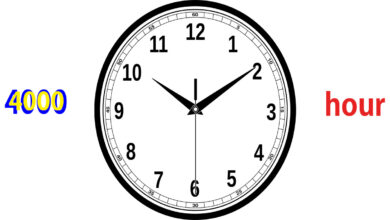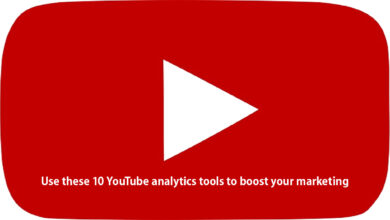YouTube Tags: The Complete Guide for Marketers

YouTube tags are crucial for effective video marketing. They play a significant role in YouTube SEO, helping the platform understand your video’s content. This understanding boosts your chances of appearing in search results and reaching new audiences.
What Are YouTube Tags?
YouTube tags are keywords or phrases that describe the content of your video. They help categorize your video, making it easier for viewers to find it. Think of them as clues that tell YouTube what your video is about.
YouTube tags are a simple yet powerful tool for enhancing discoverability on the platform. By using them wisely, you can connect with more viewers and grow your audience effectively.
Why Are YouTube Tags Important?
- Improved Visibility: Tags enhance your video’s discoverability. When users search for specific terms, well-tagged videos are more likely to appear.
- Contextual Relevance: Tags provide context to your content, helping YouTube’s algorithm recommend it to relevant audiences.
- Competitive Edge: Using effective tags can give you an advantage over competitors who may not be utilizing them properly.
Understanding YouTube Tags and Hashtags: Boost Your Video Discoverability
YouTube is a powerhouse. With over 2 billion monthly active users, it’s the second largest search engine in the world. People flock to YouTube to find videos on everything from cooking tips to tech reviews. But how do you ensure your video gets discovered among millions? Enter YouTube tags and hashtags.
The Importance of Tags
Tags are essential for improving your video’s visibility. They help YouTube understand what your content is about. When you use relevant tags, you increase the chances of appearing in search results. Think of tags as keywords that describe your video’s topic.
Key Benefits of Using Tags:
- Relevancy: Tags help categorize your content.
- Search Ranking: They influence where your video appears in search results.
- Audience Targeting: Proper tags attract the right viewers.
Tags vs. Hashtags
It’s easy to confuse tags with hashtags, but they serve different purposes.
YouTube Tags
- Used for search relevancy.
- Help the algorithm understand your video.
- Improve discoverability in standard searches.
YouTube Hashtags
- Used for dedicated hashtag searches.
- Allow users to find all videos under a specific hashtag.
- Can be included in titles or descriptions.
Think of hashtags like those on Twitter. If someone searches for a hashtag, they’ll see all related tweets. Similarly, on YouTube, searching a hashtag will show all videos tagged with it.
Best Practices for Using Tags and Hashtags
- Be Specific: Use precise tags that closely relate to your content.
- Mix Broad and Long-Tail Keywords: Combine general terms with more specific phrases.
- Limit Your Number of Tags: Too many can dilute their effectiveness; aim for 5–10 strong ones.
- Incorporate Hashtags Wisely: Use relevant hashtags in titles or descriptions to connect with broader topics.
Common Mistakes to Avoid
- Overstuffing Tags: Don’t cram irrelevant keywords into the tag box.
- Ignoring Trends: Stay updated on trending topics and adjust your tags accordingly.
- Neglecting Analytics: Regularly check which tags drive traffic and refine them based on performance data.
How to Add Tags to YouTube Videos
Adding tags to your YouTube videos is crucial for improving visibility and reach. Tags help categorize your content, making it easier for viewers to find. Here’s a simple guide to help you add tags effectively.
Step 1: Access YouTube Studio
Start by going to YouTube. Hover over your profile picture in the top right corner. From the drop-down menu, select YouTube Studio. This is your control center for managing videos.
Step 2: Navigate to Content
Once in YouTube Studio, look at the left menu. Click on Content. This section shows all your uploaded videos.
Step 3: Edit Your Video
Find the video you want to tag. Hover over it and click on Details. This will take you to the video editing page.
Step 4: Show More Options
Scroll down until you see the video details section. Look for the option that says Show More and click on it. This expands additional settings for your video.
Step 5: Add Relevant Tags
In the Tags section, you can now enter relevant keywords related to your video content. Remember, you have up to 500 characters total for all tags combined. Choose words that accurately describe your video and what viewers might search for.
Step 6: Save Your Changes
After adding your tags, don’t forget to save! Click on Save in the top-right corner of your screen. This ensures all your changes are applied.
How to Find Popular YouTube Tags
Finding the right tags for your YouTube videos can significantly boost your visibility. Tags help categorize your content and make it easier for viewers to find you. Here’s how to discover popular YouTube tags effectively.
Start with a Search
Begin by heading over to YouTube. Type in a keyword related to your video topic. For example, if your video is about houseplant care, search for “how to take care of houseplants.”
Analyze Top Videos
Look at the top results. Choose a video that closely aligns with your content. Once you click on it, check the right side of the screen for tag suggestions. These are derived from what viewers searched for and can give you valuable insights into trending topics.
Explore Related Searches
As you scroll through the suggested videos, pay attention to related searches at the bottom of the page. This section often highlights popular keywords that viewers are interested in, providing more ideas for tags.
Use Tag Extractors
For a deeper dive, consider using a YouTube tags extractor or generator tool. These tools analyze existing videos and pull out their tags automatically. They can reveal hidden gems that might not be immediately obvious.
Recommended Tools
Some popular tag generators include:
- RapidTags: Fast and user-friendly.
- Keyword Tool: Offers comprehensive keyword suggestions.
- VidIQ: Provides insights directly on YouTube.
Check Competitors’ Tags
Another strategy is to look at competitors’ videos in your niche. Use browser extensions like VidIQ or TubeBuddy to view their tags easily. This method allows you to see what’s working for others and adapt those strategies for your own content.
Keep It Relevant
Always ensure that the tags you choose are relevant to your video content. Misleading tags may lead to high bounce rates, which can hurt your channel’s performance over time.
Experiment and Adjust
Finally, don’t hesitate to experiment with different combinations of tags. Monitor which ones drive traffic and engagement. Adjust as necessary based on performance analytics.
YouTube Tags Extractor: Boost Your Video Discoverability
If you’re a content creator on YouTube, you know how crucial it is to get your videos seen. One effective way to enhance your video’s visibility is by using the right tags. Enter the YouTube tags extractor—an essential tool for any serious YouTuber.
What Is a YouTube Tags Extractor?
A YouTube tags extractor is an online tool designed to help you find popular tags associated with existing videos. By entering the URL of a video, you can quickly access a list of tags that viewers have used. These tags can then be applied to your own videos, making them more discoverable in search results.
Why Use YouTube Tags?
Tags play a vital role in how your content is categorized and found on YouTube. They help the platform understand what your video is about, allowing it to show your content to the right audience. The right tags can lead to increased views and engagement.
Top YouTube Tag Extractors
Here are some reliable tools you can use:
- Online Free Tools YouTube Tag Extractor
- Simple interface and easy to use.
- TubeRanker
- Offers insights into trending tags and keywords.
- Ytube Tool
- A user-friendly option for quick tag extraction.
- Yttags
- Provides detailed analytics on tag performance.
Generate Your Own Tags
If you’re looking to create unique tags for your videos, consider using a YouTube tags generator. These tools analyze popular trends and suggest relevant tags based on your video title.
Recommended YouTube Tags Generators
- Rapidtags
- Fast and efficient; great for quick tag generation.
- TunePocket
- Offers a variety of tag options tailored to your niche.
- TubeRanker (also doubles as a generator)
- Comprehensive features for both extraction and generation.
- TuBeast
- Known for its extensive database of trending tags.
Conclusion
Using a YouTube tags extractor or generator can significantly enhance your video’s reach on the platform. By leveraging these tools, you’ll not only save time but also ensure that you’re using effective keywords that resonate with viewers.
Tracking Performance of YouTube Tags
Once you’ve put in the effort to tag your YouTube videos, it’s crucial to track how well those tags are performing. Effective tracking can help you refine your strategy and boost your video visibility. Here’s how to do it.
Key Metrics to Monitor
- Views
This is the most straightforward metric. It tells you how many people have clicked on your video. A high view count often indicates that your tags are effective. - Watch Time
This measures how long viewers stay engaged with your video. Longer watch times suggest that your content resonates with viewers, while shorter times may indicate a mismatch between tags and content. - Engagement
Look at likes, shares, and comments. High engagement rates show that viewers find value in your content. If engagement is low, consider revising your tags or improving the content itself. - Traffic Sources
Understand where your views are coming from—YouTube search, suggested videos, or social media platforms? This information helps you identify which tags drive traffic effectively.
Using YouTube Analytics
To access these metrics, use YouTube Analytics:
- Click on your profile picture on the YouTube homepage.
- Select YouTube Studio.
- Click on Analytics in the left menu.
Here, you’ll find detailed insights into each of the key metrics mentioned above.
Search Traffic Sources
Don’t overlook the search traffic sources feature! It reveals which search terms lead viewers to your videos. Use this data to fine-tune your tagging strategy further.
Continuous Optimization
Tracking performance isn’t a one-time task; it’s ongoing. Regularly analyze your analytics and adjust your tags based on what works best for attracting viewers.
Tips for Using YouTube Tags
Maximize your YouTube visibility with these essential tag tips. Proper tagging can significantly enhance your video’s reach and engagement.
1. Don’t Use Too Many Tags
Keep it simple. Overloading your video with tags can confuse the YouTube algorithm. Stick to a handful of relevant tags. This helps ensure your content is presented to the right audience, preventing it from being buried in search results.
2. Use Trending Tags
Leverage YouTube’s auto-suggest feature. Start typing potential tags in the search bar and see what suggestions appear. Trending tags can boost your video’s visibility and connect you with current interests.
3. Mix Specific and Broad Tags
Balance is key. Use specific tags that pinpoint your content, like “Los Angeles real estate.” Pair them with broader tags such as “real estate” or “homes.” This dual approach helps attract both niche viewers and a wider audience.
4. Don’t Forget Synonyms
Expand your reach by including synonyms in your tags. If you’re creating travel content, consider using “travel,” “vacation,” and “trip.” Think about how people might phrase their searches, not just what fits into a category.
5. Analyze Competitor Videos
Take notes from those who are succeeding in your niche. Check out how competitors tag their videos, especially if they rank high for certain keywords. Learning from their strategies can inspire effective tagging for your own content.







